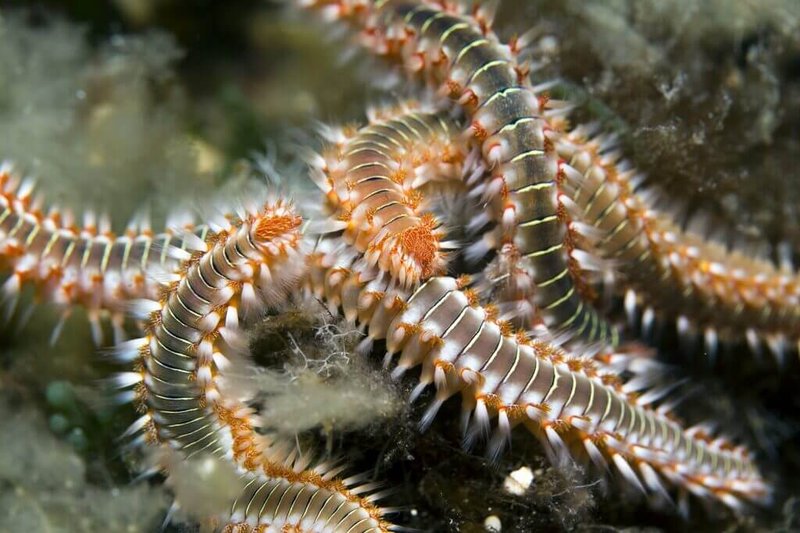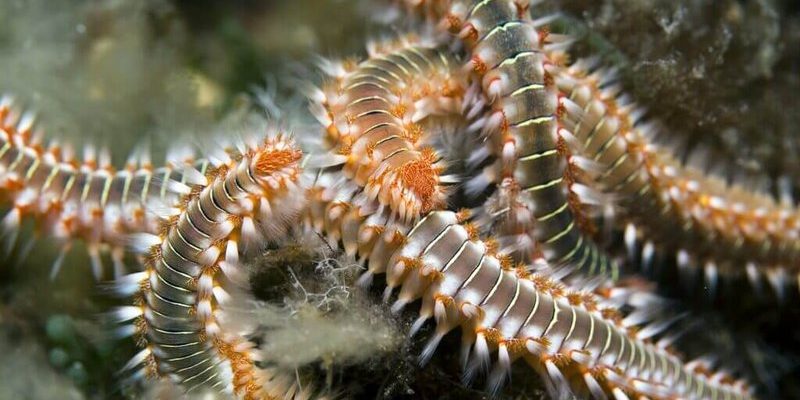
Think of bristle worms like the vacuum cleaners of the ocean floor. They help clean up detritus and organic material, playing an essential role in keeping the marine environment healthy. But, as with many things in nature, there’s more to the story. Some bristle worms carry a secret weapon—**stinging bristles**—which can make encounters with them quite unpleasant. So how dangerous are they? Let’s break it down together.
What Are Bristle Worms?
Bristle worms, scientifically known as Polychaeta, are a large group of segmented worms found in various aquatic environments around the world. These worms come in diverse shapes and sizes, with some being just a few centimeters long while others can grow over a meter! You might spot them on rocks or in your aquarium, often moving quickly and wriggling about.
These worms have a distinctive look, featuring **hair-like bristles** or chaetae along their bodies. These bristles are made of a tough substance called **chitin**, which protects the worm and helps it move through the sand or mud. Some species are brightly colored, adding a splash of vibrancy to the underwater scenery.
Interestingly, bristle worms are also key players in the food web. Many marine animals, including fish and sea turtles, consider them a tasty snack. While they may seem harmless at a glance, the bristles they carry can pack a punch!
Are Bristle Worms Dangerous to Humans?
Now, let’s address the big question: are these creatures dangerous? The answer is a bit nuanced. While most bristle worms are not harmful, certain species do have stinging bristles that can cause irritation or allergic reactions in humans.
When touched, some of these bristles can break off and lodge into the skin, leading to a reaction similar to a sting. Symptoms can include redness, swelling, and in some cases, a burning sensation. It’s not life-threatening, but it can certainly ruin your day at the beach if you’re not careful.
Here’s the thing: the risks typically arise when you accidentally disturb their habitat. If you’re foraging for marine life or diving, it’s essential to watch where you’re putting your hands or feet. Think of bristle worms as little underwater ninjas—stealthy but potentially annoying if you’re not paying attention.
Identifying Bristle Worms
So, how do you know if you’re dealing with a bristle worm? Here are some telltale signs to look for:
- Body Segments: Bristle worms have segmented bodies, usually with a distinct head and tail.
- Antennae: Look for two long, feather-like structures (antennae) on their heads. They use these to sense their environment.
- Bristles: Check for tiny bristles protruding from their bodies. If you see those, you’ve probably found a bristle worm!
One way to spot them is by their movement. Bristle worms tend to glide or wiggle gracefully through the water or sand, which can make them look quite elegant.
If you’re unsure, it’s best to admire them from a distance. After all, respecting nature is a key part of enjoying it!
What to Do If You Get Stung
If you happen to come into contact with a bristle worm and get stung, don’t panic! Here’s what you should do:
1. **Remove the Bristles:** If you can see any bristles stuck in your skin, gently remove them using tweezers. Be careful not to break them off further, as they can cause more irritation.
2. **Wash the Area:** Clean the affected area with soap and water to reduce the chance of infection.
3. **Apply a Cold Compress:** To ease the pain and reduce swelling, place a cold compress on the area for about 10-15 minutes.
4. **Use Pain Relief:** Over-the-counter pain relievers like ibuprofen or acetaminophen can help manage any discomfort.
If symptoms persist or worsen, don’t hesitate to seek medical attention. Better safe than sorry!
Myths vs. Facts About Bristle Worms
There are plenty of myths surrounding bristle worms, so let’s set the record straight.
**Myth 1:** All bristle worms are dangerous to humans.
**Fact:** While some species can sting, many are harmless and beneficial to the ecosystem.
**Myth 2:** They will actively attack humans.
**Fact:** Bristle worms are generally shy and will avoid human contact. Most stings happen accidentally.
**Myth 3:** You can’t keep bristle worms in an aquarium.
**Fact:** Many aquarium enthusiasts intentionally keep some species of bristle worms to help maintain a clean tank.
Understanding these myths can help ease worries and encourage a healthier respect for these unique creatures.
The Role of Bristle Worms in Ecosystems
Let’s take a step back and appreciate the role bristle worms play in their ecosystems. As scavengers, they feast on dead organic material, helping keep the ocean clean. They also aerate the seabed, allowing oxygen to reach other marine organisms.
In many ways, they’re the unsung heroes of the underwater world. Their presence can indicate a healthy marine environment since they thrive in well-balanced ecosystems. If you see bristle worms flourishing, it’s often a good sign that the local habitat is doing well.
People often overlook their importance because of their somewhat creepy appearance. But honestly, these creatures are crucial players in marine health.
In summary, bristle worms are intriguing creatures that deserve our respect, not fear. While some can cause discomfort if handled improperly, they’re not out to harm us. Instead, they play an essential role in maintaining healthy ecosystems. The next time you find yourself by the beach or peering into your aquarium, take a moment to appreciate these fascinating little beings.
So let’s embrace the wonder of the ocean and all its unique inhabitants. Just remember to be cautious and give bristle worms the space they need to thrive!

